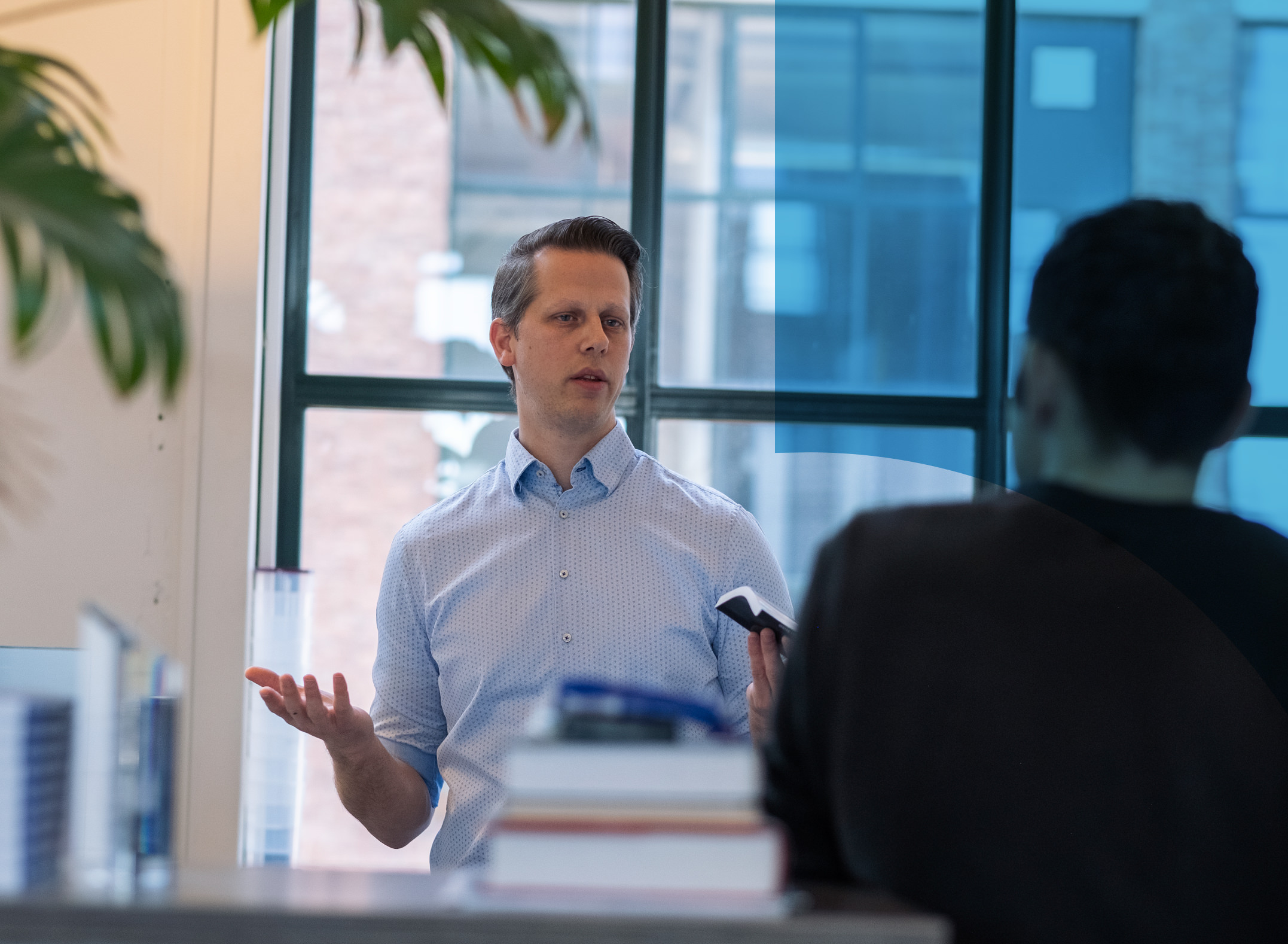An interesting bit of news has captured our attention. It has made us think. Let’s see what we can learn from modelling it and looking at the numbers.
At the World Expo 2021 in Dubai, Dutch artist Ap Verheggenhas contributed a real eye-catcher. His installation produces hundreds of litres of water per day from nothing but energy and outside air. This can be seen as a new chapter in the glorious history of Dutch Water Management. Does this mean free water for thirsty people, cattle and land, or is it too good to be true?
How the system works is explained, qualitatively, on the website of Sun Glacier (sunglacier.nl).

At Reden, we like to quantify processes, because the right numbers can help to understand how things work, and also how well they work. Ap Verheggen is an artist and sees, beyond the numbers, the many situations where water can be harvested from air to supply drinking water and perhaps even water for irrigation. What, then, do the numbers teach us?
First, let’s see how much water there is in the air. On 5 November 2021, the numbers for three well-known towns were (temperature and RH: data from tripmondo.com)
The first impression is that there isn’t a lot of water in the air. On the other hand, there is a lot of air available. It is surprising that there is not much less water in the air in Timbuktu than in Amsterdam, and that the air contains the most water in Dubai.
There is, of course, an unlimited supply of air, so only the trouble of moving it and cooling it comes into play. The Sun Glacier systems use a fan, a pump and a water cooler to perform these tasks. The magic occurs when water condenses on the cold water droplets, which become warmer as a result. The air is cooled at the same time, which can be a bonus.
If all water present in the air can be harvested, a lot of air must be cooled to obtain 1 litre of water: 77 m3 in Dubai and 213 m3 in Timbuktu. The air must be cooled to the dewpoint, or by 12.4°C in Dubai and 36.9°C in Timbuktu.
These numbers show why it is easier to harvest water from air in Dubai than in Timbuktu; the cooling effort, expressed in cubic metres times temperature drop is more than eight times higher in Timbuktu than in Dubai (for this particular day).
It is not clear how much energy Sun Glacier needs to power the World Expo exhibit, which produces 800 – 1200 l/24 h. The website does supply a number for the Droppler20, which produces up to 30 l/24 h at a consumption of up to 620 W, which means 2.0 l/kWh (SunGlacier states 3 l/kWh which is presumably under favourable conditions). This system does not provide cool air as a by-product.
How much energy is removed from the humid air? There are three components:
- cooling the air
- cooling the water to dew point
- removing the condensation heat
For the Dubai case the numbers work out to 1.44 (1), 0.03 (2) and 2.26 MJ (3), in total 3.7 MJ per litre of water. If we take the favorable number of 3 l/kWh, and remember that 1 kWh=3.6 MJ, then the Coefficient of Performance is (3 x 3.7) / 3.6 = 3.1. This is a number which is of the same order as a state-of-the-art domestic air conditioner, which achieves a COP of around 5. If the cold air can be used to pre-cool incoming air, there is an opportunity for producing water more efficiently (part 1 can then be reduced).
For towns near the sea, an alternative way to obtain fresh water is desalination of sea water. According to Wikipedia, Reverse Osmosis costs up to 5.5 kWh/1000 litres, which means a yield of 180 litres per kWh, 60 times more than the Droppler20.
A sun powered system using photovoltaic cells works only during the day. If we assume a 12 hr. day, solar intensity of 300 W/m2 and solar cell efficiency of 25%, the harvestis 0.9 kWh per m2 and per day. In 12 hrs, the Droppler20 would produce 15 l at an energy consumption of 5 kWh, for which it would need 5,6 m2 of solar cells. The World Expo would need, for the same assumptions, 448 m2 of solar cells.
Conclusion
Harvesting water from air is generally possible but much more energy-costly than desalination. The sun glacier method achieves an efficiency fairly typical of domestic air conditioning systems, which are not optimised to produce water. There seems room to improve the performance of the sun glacier system by using the cooled air to pre-cool the incoming air. This is probably just what Sun Glacier is currently working on.
The Sun Glacier is not a recipe for free water (the equipment is not free) but is no mirage either; the water shown in Dubai is real enough.




